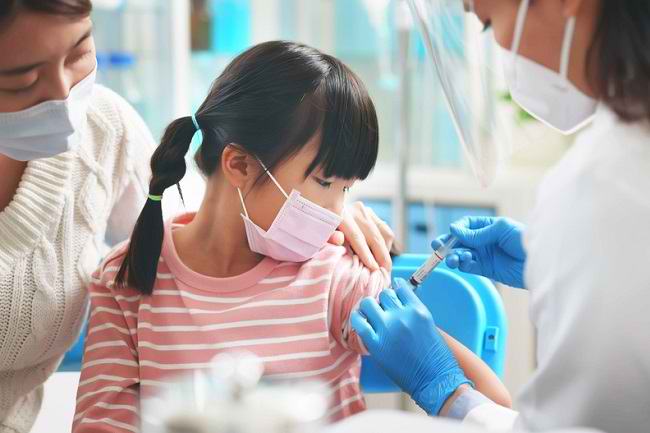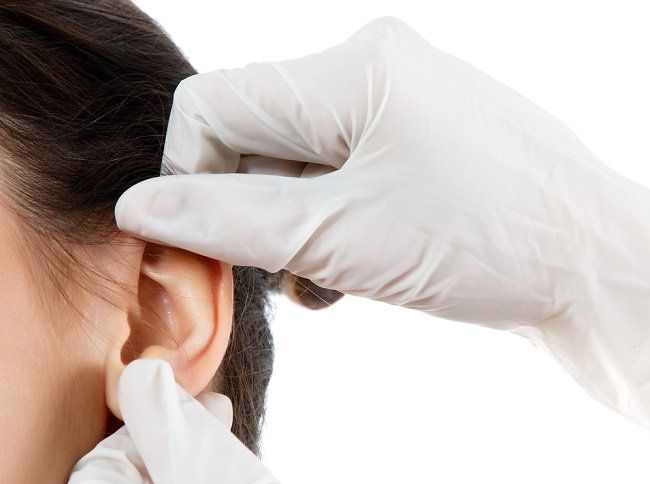Breast surgery is a procedure to change the breasts, in both women and men. Broadly speaking, breast surgery can be done to treat diseases of the breast or to improve the appearance of the breast according to the patient's wishes.
Breast surgery is generally safe to do. However, before deciding to undergo this procedure, make sure the doctor chosen has the right qualifications and sufficient experience in breast surgery. Also make sure the selected hospital meets the standards.

After getting the right doctor and hospital, first discuss with the doctor about the goals, benefits, and risks that may occur after breast surgery.
Types and Indications of Breast Surgery
Breast surgery can be divided into two categories based on its purpose, namely surgery for medicinal purposes and surgery for cosmetic purposes. The full explanation is as follows:
Breast surgery for treatment
Breast surgery for treatment is done as a therapy to treat tumors or breast cancer. This operation is generally done on the advice of a doctor. The following are examples of breast surgery for treatment:
- Lumpectomy
Lumpectomy is the surgical removal of small tumors, early-stage breast cancer, or abnormal tissue in the breast. Lumpectomy is usually followed or may be preceded by radiation therapy.
- Mastectomy
Mastectomy is the surgical removal of the breast and some of the surrounding tissue. This procedure is performed to treat breast cancer that cannot be treated with a lumpectomy or to prevent breast cancer in women who are known to be at risk for it.
- Breast reconstruction surgery
This procedure aims to reshape the breast after a mastectomy or repair the shape of the breast that has been severely damaged by an injury. Breast reconstruction surgery after mastectomy can be done immediately after the mastectomy or postponed for some time.
Breast surgery for cosmetics
Cosmetic breast surgery is performed to change the appearance of the breasts. This operation is usually performed at the request of the patient, but may also be recommended by the doctor. The following are the types of cosmetic breast surgery:
- Breast augmentation surgery
Breast augmentation surgery is a procedure that aims to enlarge the breasts, making the breasts look symmetrical, proportional, or in accordance with the patient's expectations. This surgery is performed by implanting implants into breast tissue or chest muscles.
- Breast reduction surgery
As the name implies, breast reduction surgery aims to shrink the breasts. This procedure is done by removing some of the fat tissue, connective tissue, and skin of the breast.
This operation generally aims to make the breast shape more proportional and in accordance with the shape of the body. However, in addition, this surgery can also be performed on women who experience neck or back pain due to large breasts, or in men who suffer from gynecomastia (large breasts).
Breast Surgery Warning
Before deciding to undergo breast surgery, there are several things that the patient must know first. The following are things that patients should know, based on the type of breast surgery they want to undergo:
Breast surgery for treatment
Breast surgery for cancer treatment cannot guarantee that the cancer will be completely cured. After a lumpectomy or mastectomy, patients may still have to undergo other treatment methods, such as radiotherapy or chemotherapy, depending on the type of cancer they have.
In addition, not all patients with breast cancer can undergo this surgery. Generally, patients who have connective tissue diseases, such as scleroderma and lupus, are not advised to undergo breast surgery because it can worsen the disease and make the recovery process more difficult.
In particular, lumpectomy should not be performed on patients with the following conditions:
- Have two or more breast tumors that are located far apart, so they cannot be removed through one incision
- Having small breasts with large tumors, because it can give a bad breast appearance afterwards
Meanwhile, mastectomy cannot be performed or needs further consideration in breast cancer patients whose cancer has spread (metastasized) to other organs or originates from cancer in other organs.
Breast reconstruction surgery after undergoing a mastectomy or after an injury also has certain conditions. Breast reconstruction surgery should not be performed on patients with the following conditions:
- Over 65 years old
- Have you had radiation therapy to the chest area before?
- Obesity
- Severe lung or heart disease
- Stage 3 or stage 4 breast cancer
- Emotional control disorder
- Smoking habit you don't want to stop
Breast surgery for cosmetic purposes
When deciding to undergo breast surgery for cosmetic purposes, the patient needs to choose a hospital and doctor who are trusted in this field. In addition, patients also need to know the following:
- Breast augmentation surgery cannot prevent sagging or drooping breasts.
- The results of breast augmentation surgery can be affected by the patient's age and weight gain or loss.
- Breast implants don't last a lifetime and need to be renewed every 10 years or maybe sooner.
- Breast implant surgery or breast reduction surgery can cause difficulties during the breastfeeding process.
- Breast implant users should undergo breast ultrasound or breast MRI regularly, to determine the possibility of implant rupture.
When consulting with a doctor, the patient is expected to convey in detail about the desired breast size and appearance. Patients also need to provide information about their overall medical history, history of drug consumption, smoking habits, and medical procedures that have been undertaken.
Not everyone can undergo breast surgery for cosmetic purposes, either to enlarge or reduce breasts. In general, the following are some of the conditions that make cosmetic breast surgery not possible or should be postponed:
- Suffering from a breast infection
- Suffering from a tumor or breast cancer
- Have a history of autoimmune disease
- Have excessive expectations of operating results
- Currently undergoing radiotherapy
- Is pregnant
- Being overweight or obese
- Suffering from diabetes
- Suffering from blood clotting disorders
- Suffering from heart or blood vessel disease
For patients who wish to undergo breast augmentation surgery, the operation may be canceled if the patient is known to have an allergy to silicone.
Before Breast Surgery
If the patient is declared to be able to undergo breast surgery, there are several things that need to be prepared, namely:
- Perform a breast physical exam, breast ultrasound, or mammogram
- Do blood test
- Stop taking certain drugs for some time before surgery
- Fasting 8–12 hours before surgery
- Asking family or relatives to accompany the patient during and after surgery
Breast Surgery Procedure
Before breast surgery begins, the doctor will first inject general anesthesia, so that the patient sleeps and does not feel pain during the operation. After the anesthesia works, the doctor will start breast surgery whose stages depend on the type of surgery to be performed. Here's the full explanation:
Lumpectomy
Lumpectomy begins with making an incision in the breast. Next, the doctor will remove the tumor and a small piece of tissue around the breast. If needed, the doctor may also remove the lymph nodes around the breast.
After the removal process is complete, the doctor will close the incision with stitches or use a special adhesive. The lumpectomy procedure is generally short, about 1 hour.
Mastectomy
Mastectomy begins with making an incision around the breast. After that, the doctor will remove all the breast tissue. If necessary, the doctor will also remove the tissue around the breast, depending on the extent of the spread of breast cancer experienced by the patient.
There are several types of mastectomy surgery, namely:
- Simple/total mastectomy, namely the removal of all parts of the breast, including the nipple, areola, and breast skin
- Modified radical mastectomy, i.e. procedure simple mastectomy accompanied by removal of all lymph nodes in the armpit
- Skin-sparing mastectomy, namely the removal of the breast glands, nipple, and areola, without the removal of the breast skin
- Nipple-sparing mastectomy, namely the removal of breast tissue by leaving the nipple and breast skin
- Radical mastectomy, namely the removal of the entire breast, lymph nodes in the armpit, and chest muscles (pectoral) under the breast
- Double mastectomy, which is a preventive measure for women who are at risk of developing breast cancer, by removing both breasts
The length of the procedure varies, depending on the type of mastectomy performed and the patient's condition. However, mastectomy generally takes 1–3 hours.
Breast reconstruction surgery
Breast reconstruction surgery can take 1–6 hours. There are two types of breast reconstruction surgery to choose from, depending on the patient's condition and needs, namely:
- Implantation
Implantation begins with inserting tissue expander to the skin of the breast, so that the skin of the breast expands. After that, the doctor will insert the implant, which is made of silicone gel or saline (sterile salt water).
- Tissue flap
Tissue flap This is done by taking tissue from the patient's back or abdomen to form a breast mound. This removed tissue can be left connected to the old blood vessel or cut off and connected to the new blood vessel.
Once the breast reconstruction is complete, the patient can undergo a nipple reconstruction procedure. This procedure is performed by removing tissue from the back or abdomen. The tissue taken is then shaped so that the texture, color, and size match the original nipple.
Breast reduction surgery
The method used by doctors in breast reduction surgery depends on the shape and size of the patient's breasts, how much breast tissue will be removed, and how the patient wants her breasts to look after surgery.
The following are some methods of breast reduction surgery:
- Liposuction or liposuction
Liposuction is performed by making a small incision in the skin of the breast, which then becomes a medical doctor who enters a small tube that functions to suck up excess tissue and fat in the breast. This method is used when only a small amount of fat and tissue is removed.
- vertical
Method vertical This is done by making an incision around the areola to the crease under the breast. Breast reduction surgery with this method is chosen if the breast tissue to be removed is not too little but also not too much.
- Inverted-T or anchor
Anchor method is done by making an incision on the outside of the areola to along the fold under the breast, so that the shape of the incision resembles an anchor. This method is used if there is a lot of breast tissue to be removed.
After the breast tissue has been successfully removed, the doctor will remove the fluid in the breast using a special tube (drainage), then close the incision with stitches. Breast reduction surgery usually lasts 2–5 hours, but it can also take longer.
Breast augmentation surgery
Breast augmentation surgery aims to increase the size of the breasts or improve the shape of the breasts. The following are the steps performed by plastic surgeons in breast augmentation surgery:
- Making an incision under the breast, under the armpit, or around the nipple
- Separates the breast tissue and its surroundings to form a sac in front or behind the outermost muscle in the chest wall (pectoral muscles)
- Inserting an implant made of silicone gel or saline into the formed sac and placing it behind the nipple
- Sew up the incision and cover it with a special bandage or adhesive
Breast augmentation surgery generally lasts 1-2 hours.
After Breast Surgery
After the breast surgery is completed, the doctor will take the patient to the recovery room. The doctor will control the patient's blood pressure, pulse, and breathing rate. The doctor will also tell the patient how to treat the incision, when to change the bandage, and recognize the signs of infection.
Depending on the condition and type of breast surgery performed, the patient may be discharged home or may need to undergo further recovery in hospital after surgery. In patients who are discharged home, the doctor will provide a schedule of controls to remove sutures, bandages, or drainage tubes.
During the recovery process, the patient may feel tired easily and experience pain, bruising, swelling, or numbness in the breast. These complaints are common and can last for several weeks or months after surgery. Scars will also be visible for a few weeks, then fade over time.
To help the recovery process, there are several things that the patient must do, namely:
- Get plenty of rest and don't do strenuous activities until fully recovered
- Taking pain relievers prescribed by a doctor
- Wearing a compression bandage or sports bra to hold your breasts so they don't move too much
- Carry out the examination according to the schedule given by the doctor
The results of breast enlargement or reduction surgery will generally be seen after a few months, while breast reconstruction surgery takes 1-2 years for the breast tissue to heal and the scars to fade.
Breast Surgery Risks
All types of surgery have a risk of complications, as well as breast surgery. Some of the risks that can occur due to breast surgery are:
- Bleeding
- Infection
- Pain, bruising, and swelling in the breast
- Pain and stiffness in the shoulder
- Numbness in the armpits and breasts
- Formation of scar tissue, such as keloids, in the surgical area
- Accumulation of blood (hematoma) in the area of the surgical site
- Damage to nerves and blood vessels in the surgical area
Especially for breast surgery that uses implants, complications that can occur include:
- Asymmetrical breasts
- Fluid buildup around the implant
- The breast skin around the implant becomes wrinkled
- Implant position changes
- Implants leak or rupture
Immediately consult a doctor if you experience complaints after breast surgery, such as:
- Fever
- Discoloration of the breast or in the scar
- Discharge from the incision
- Pain or swelling in the breast that gets worse









